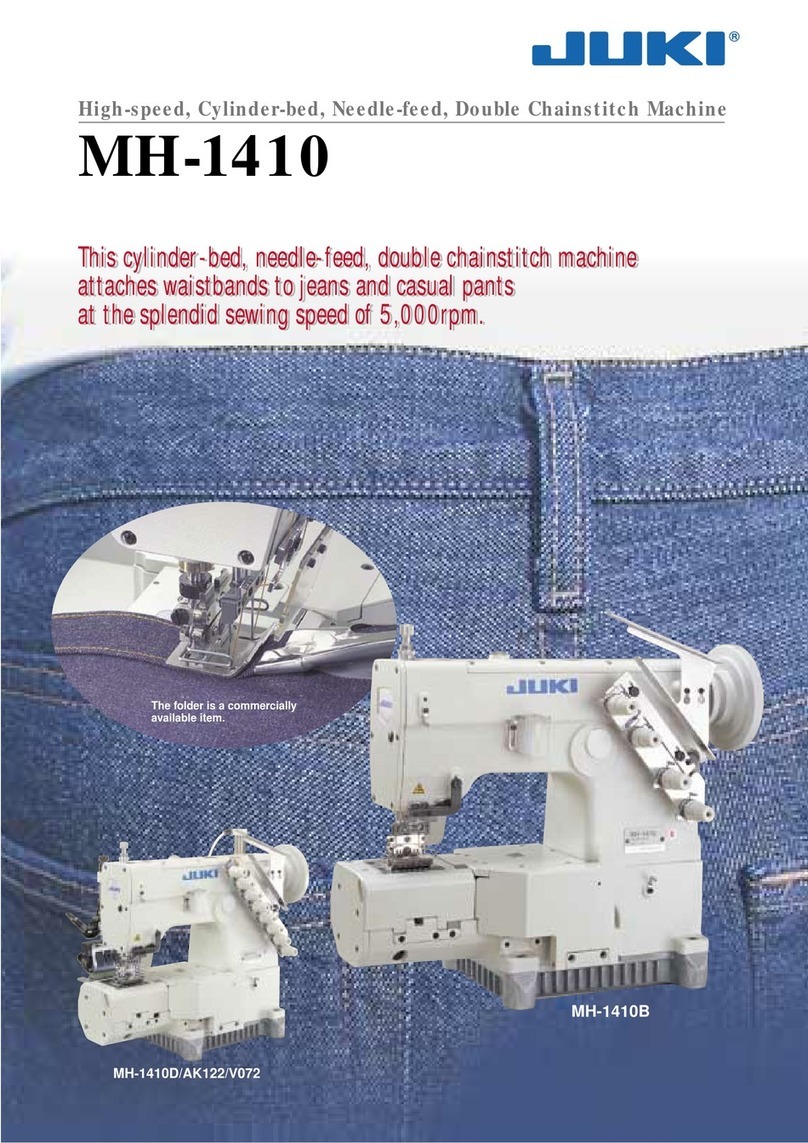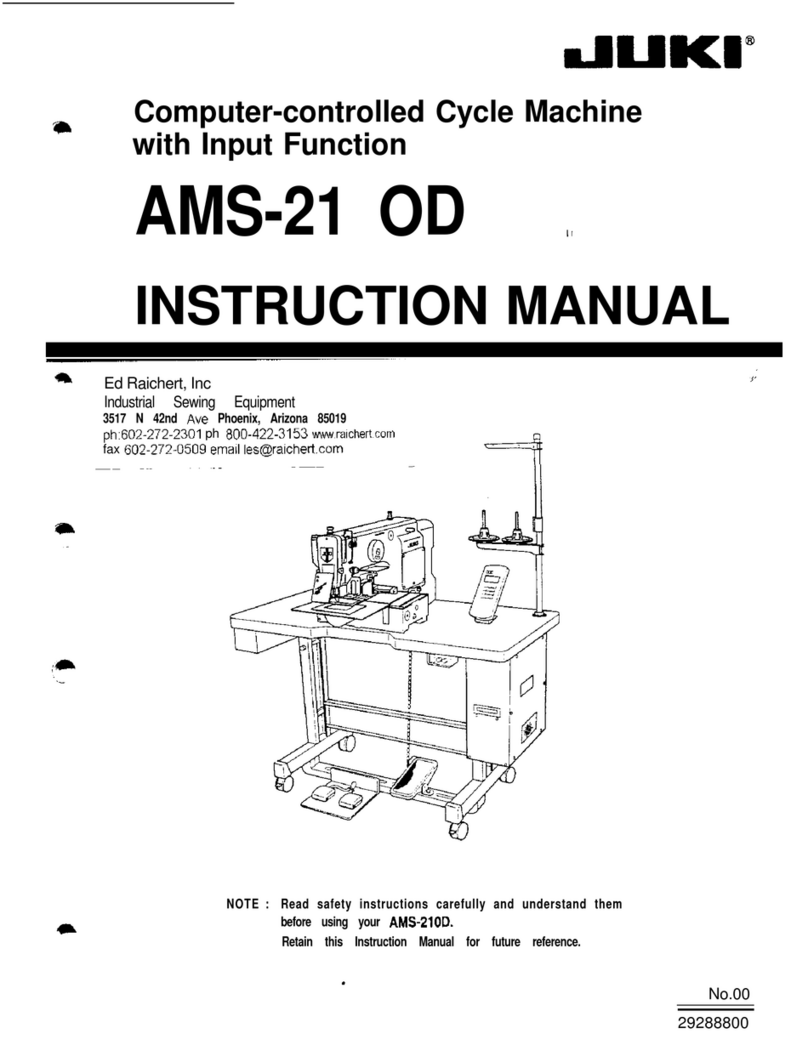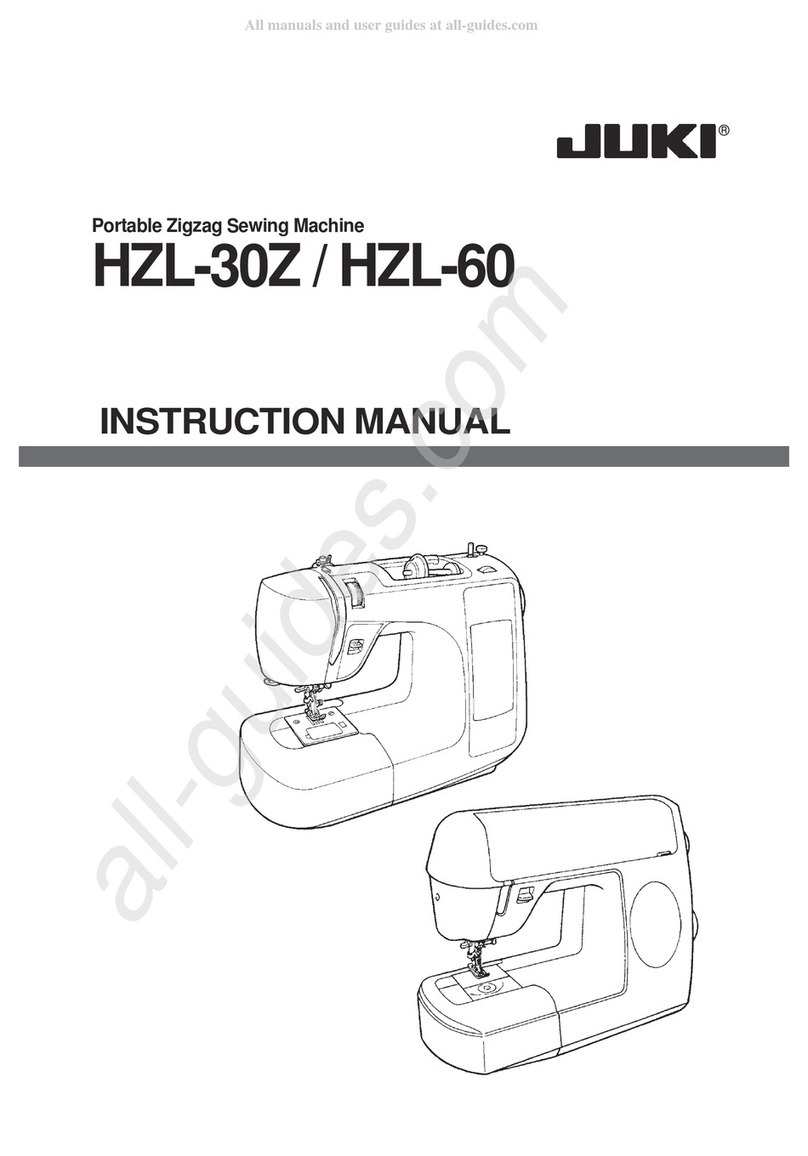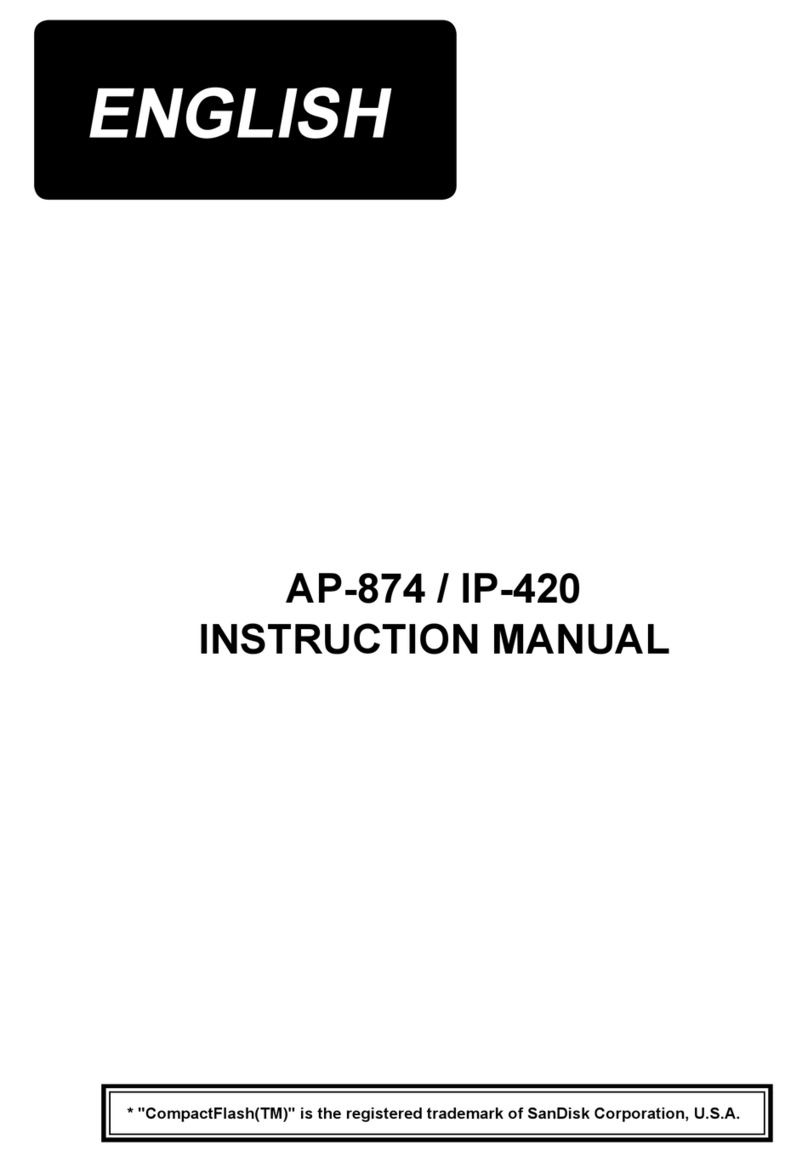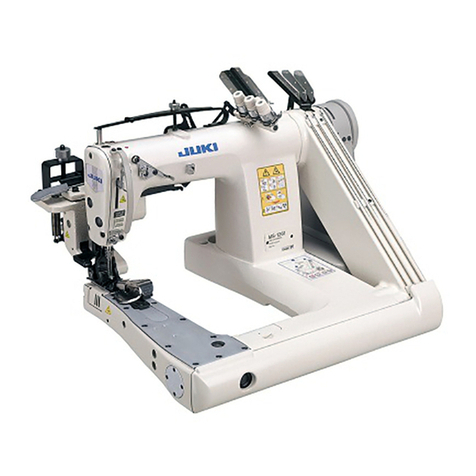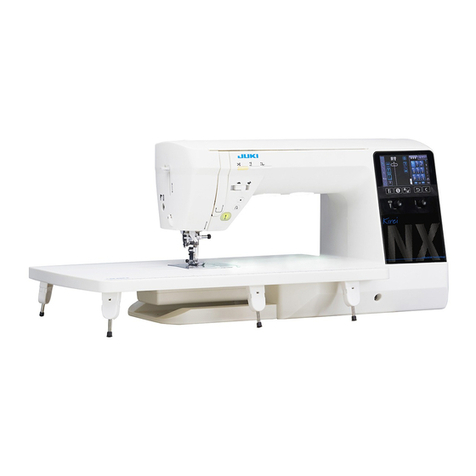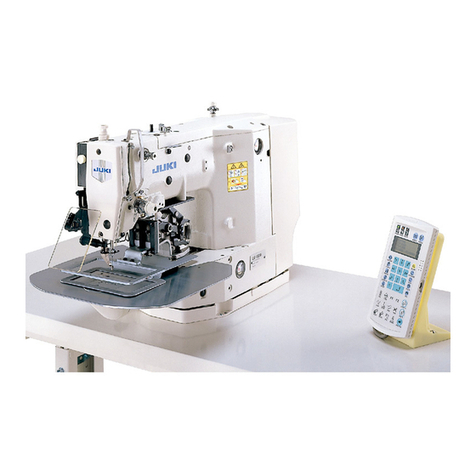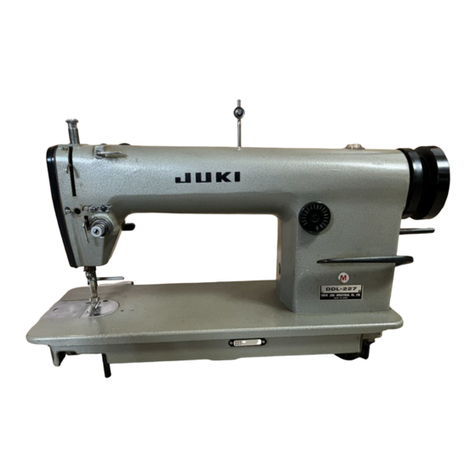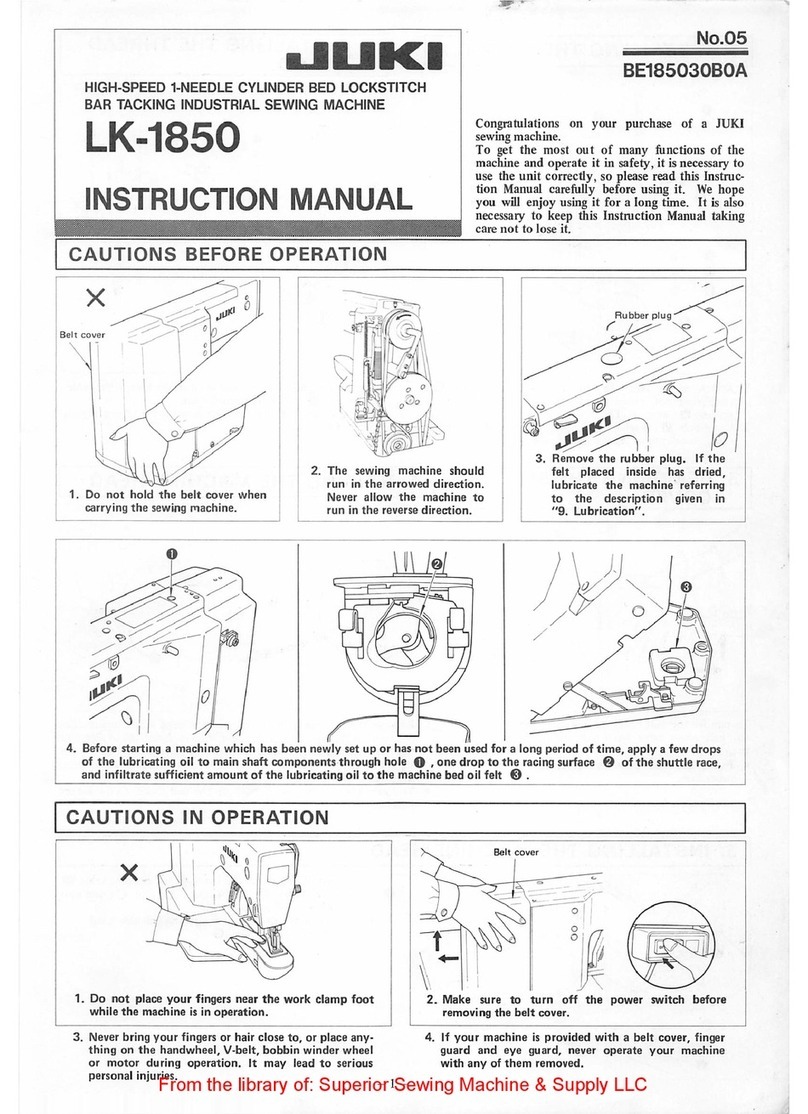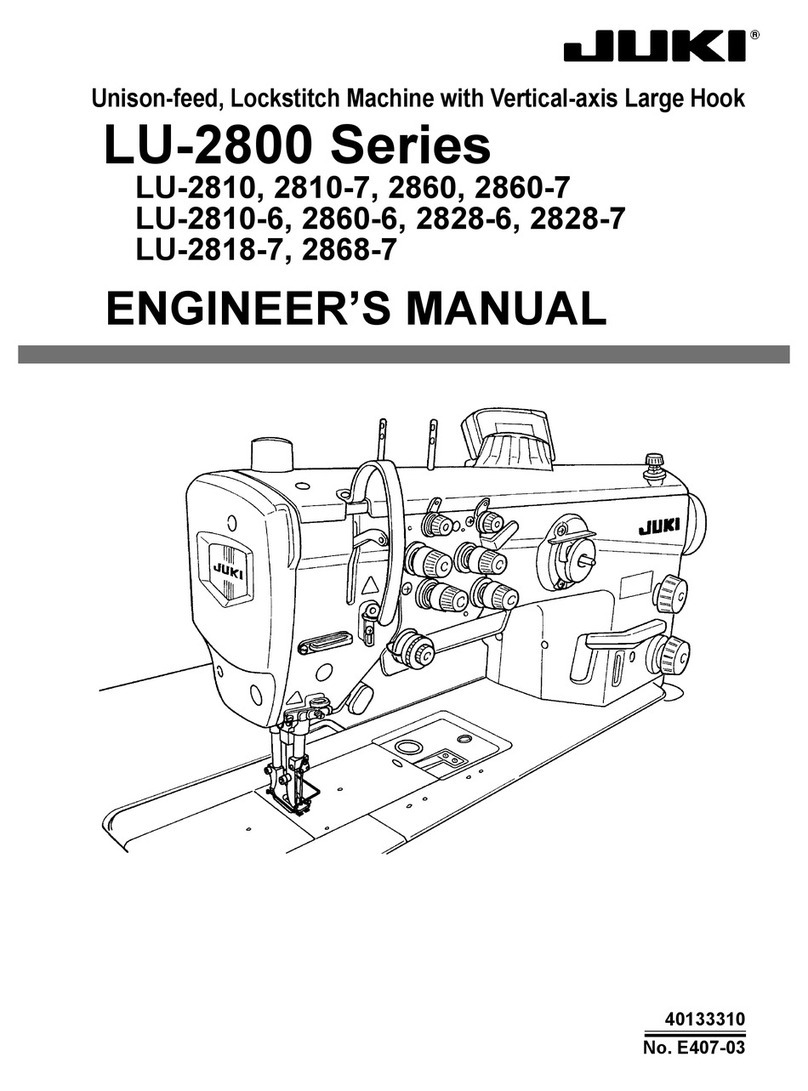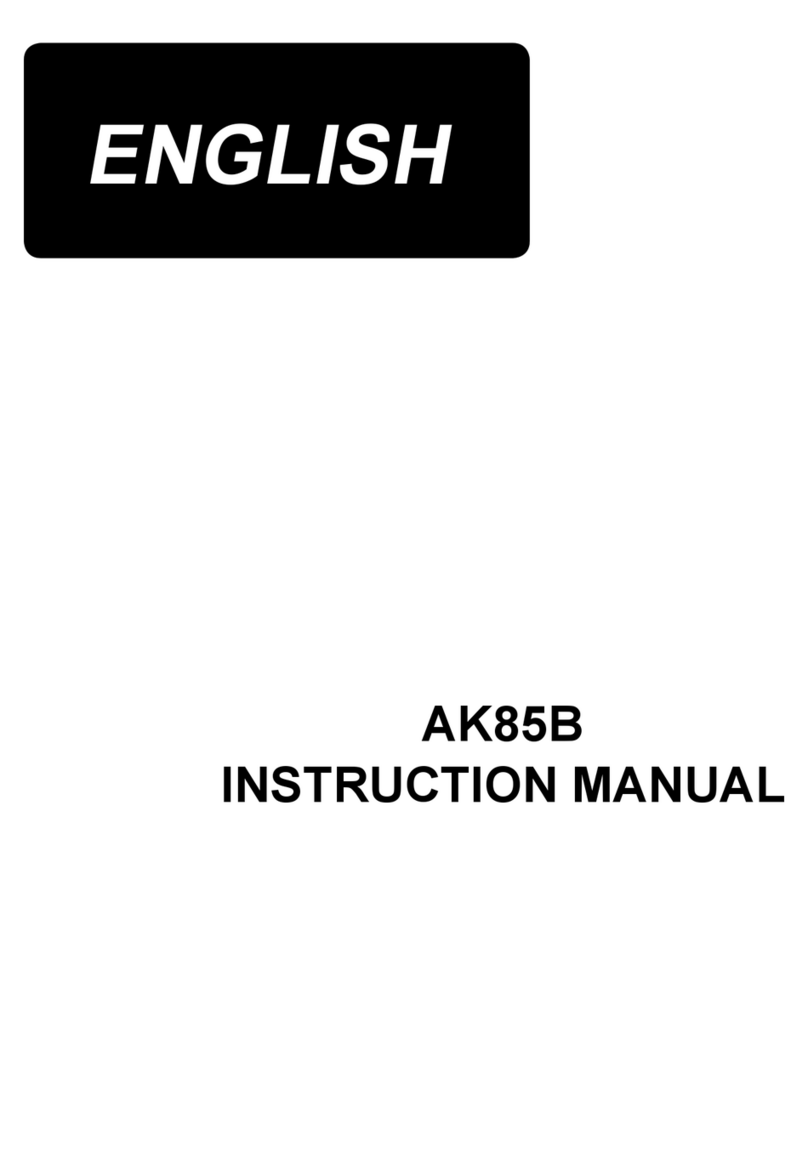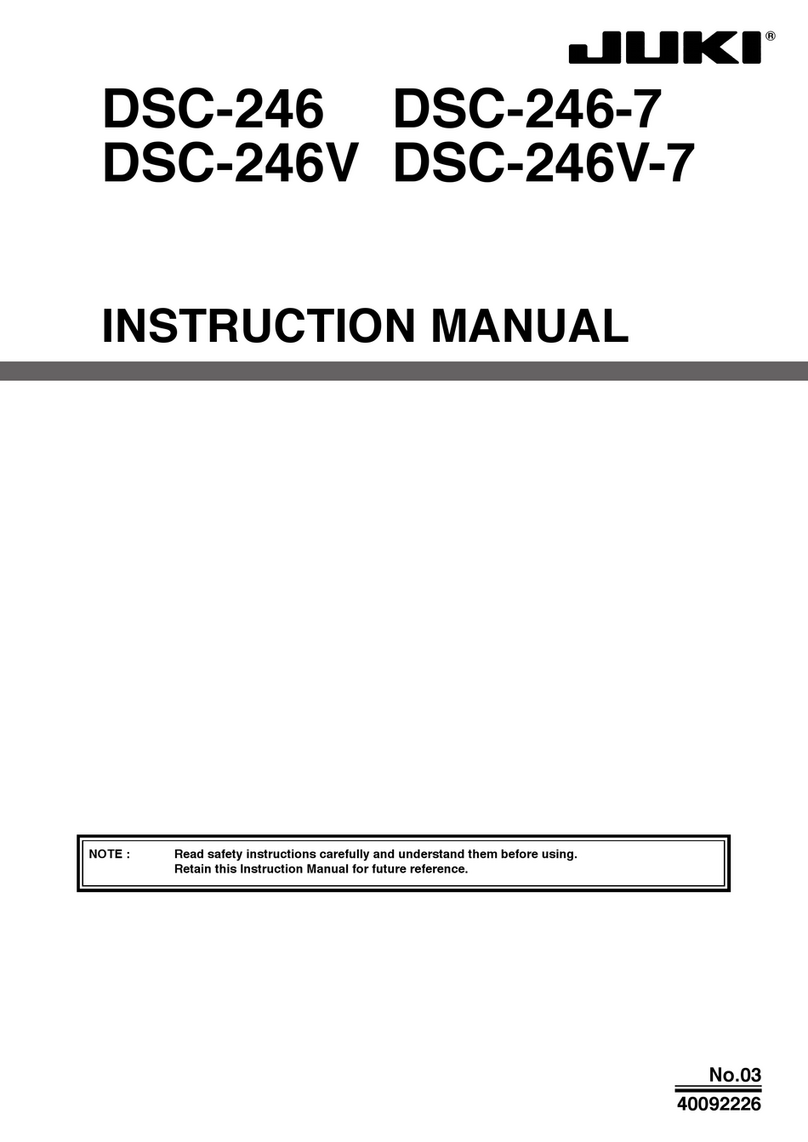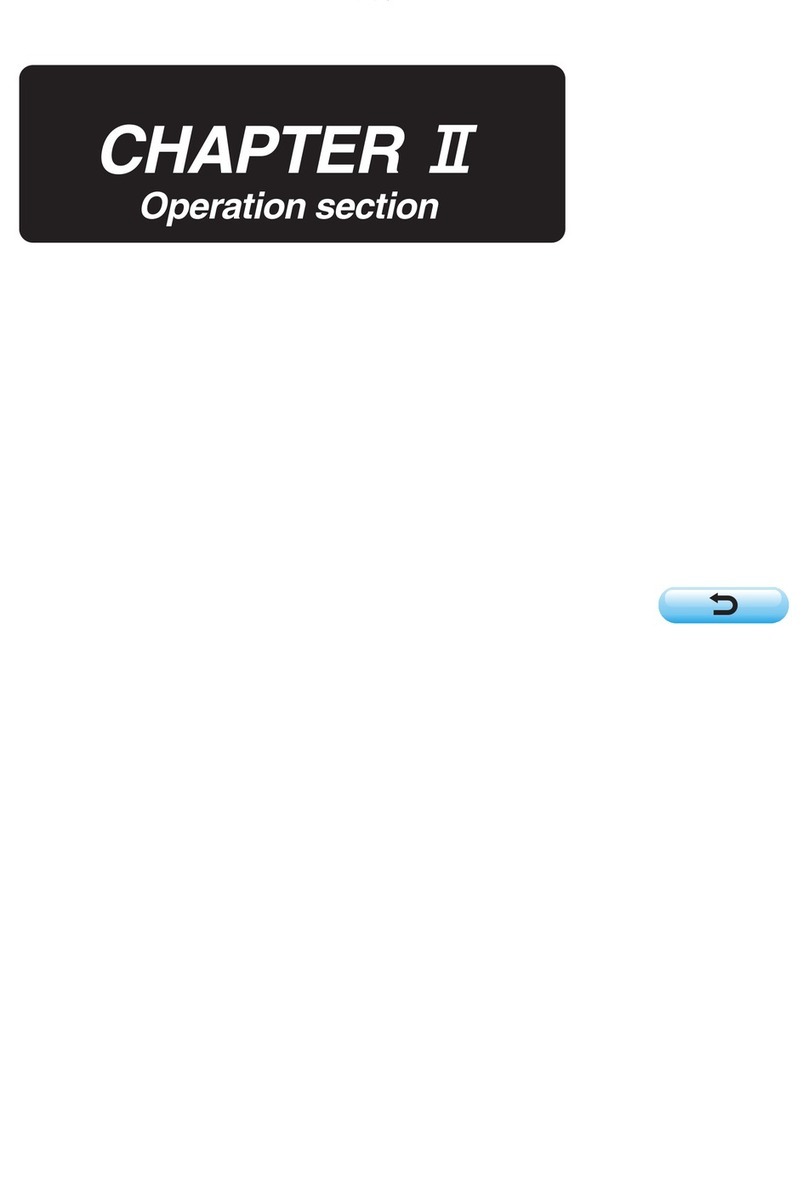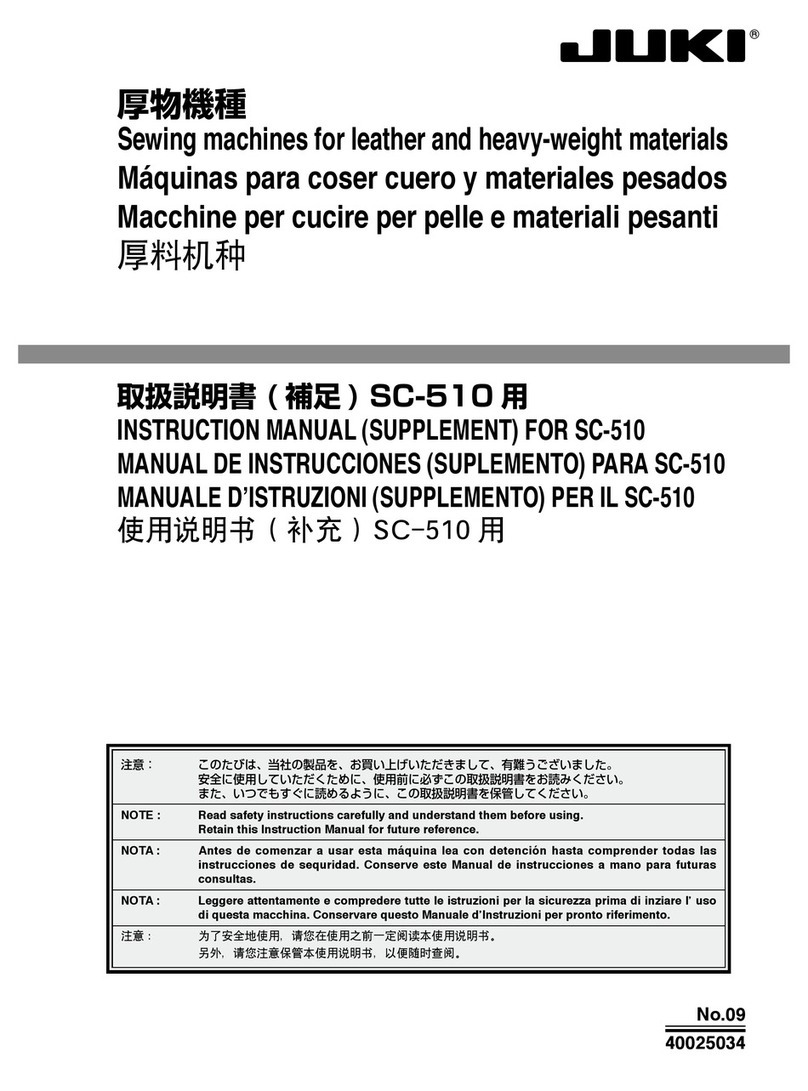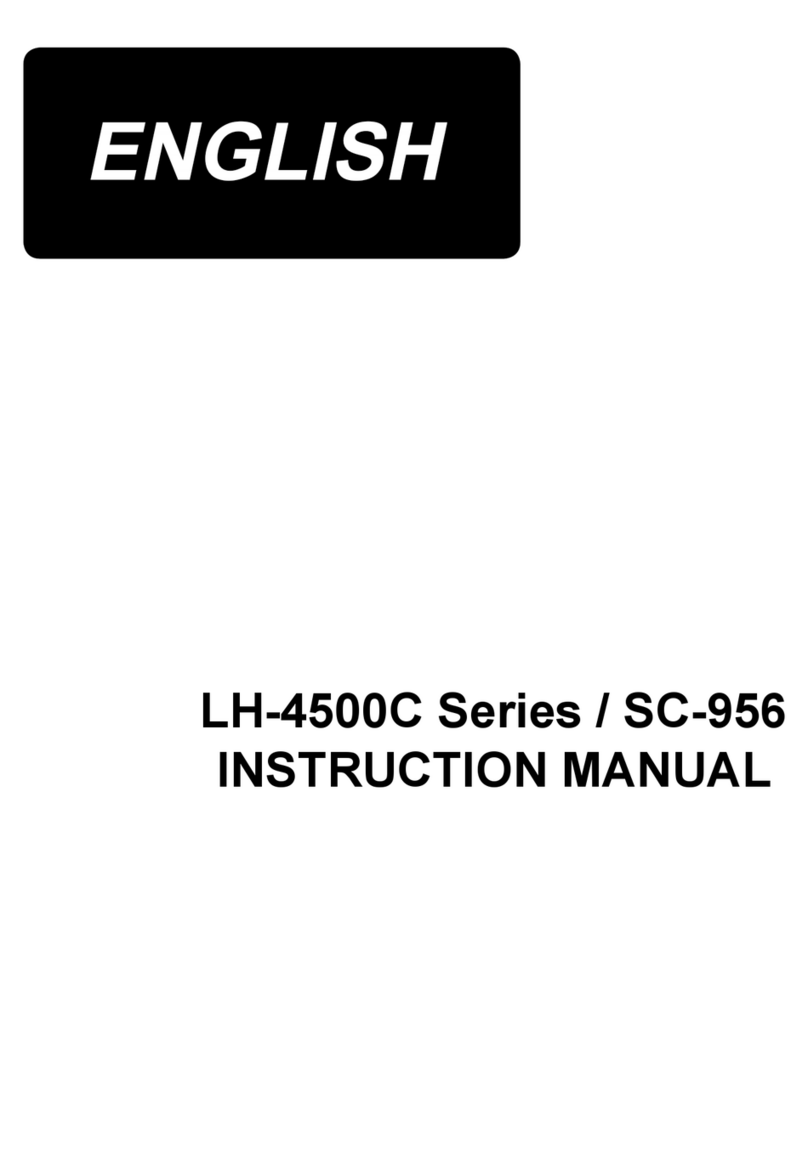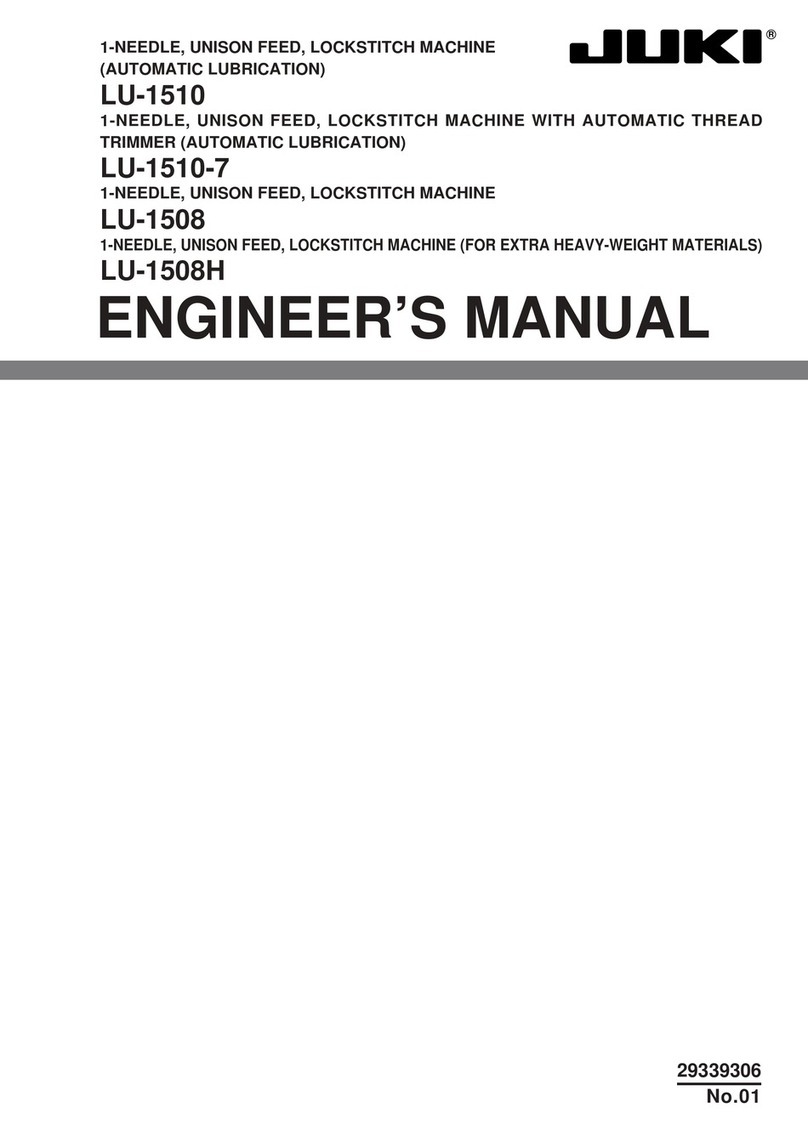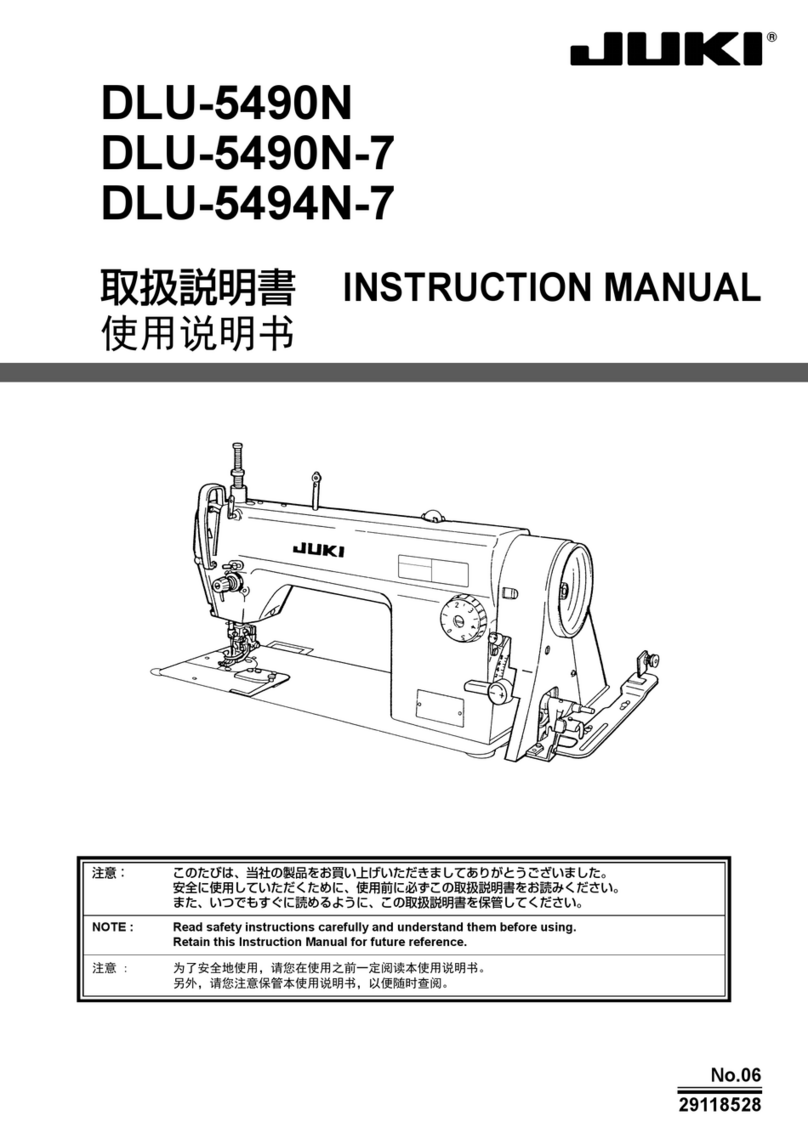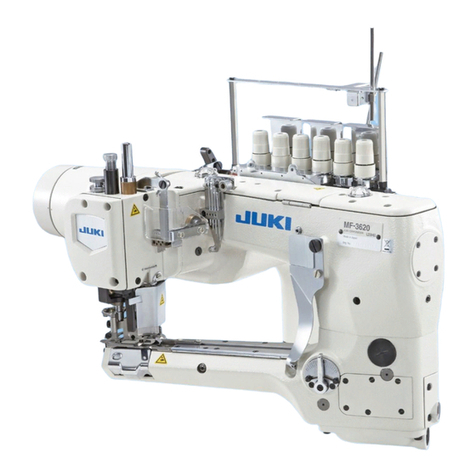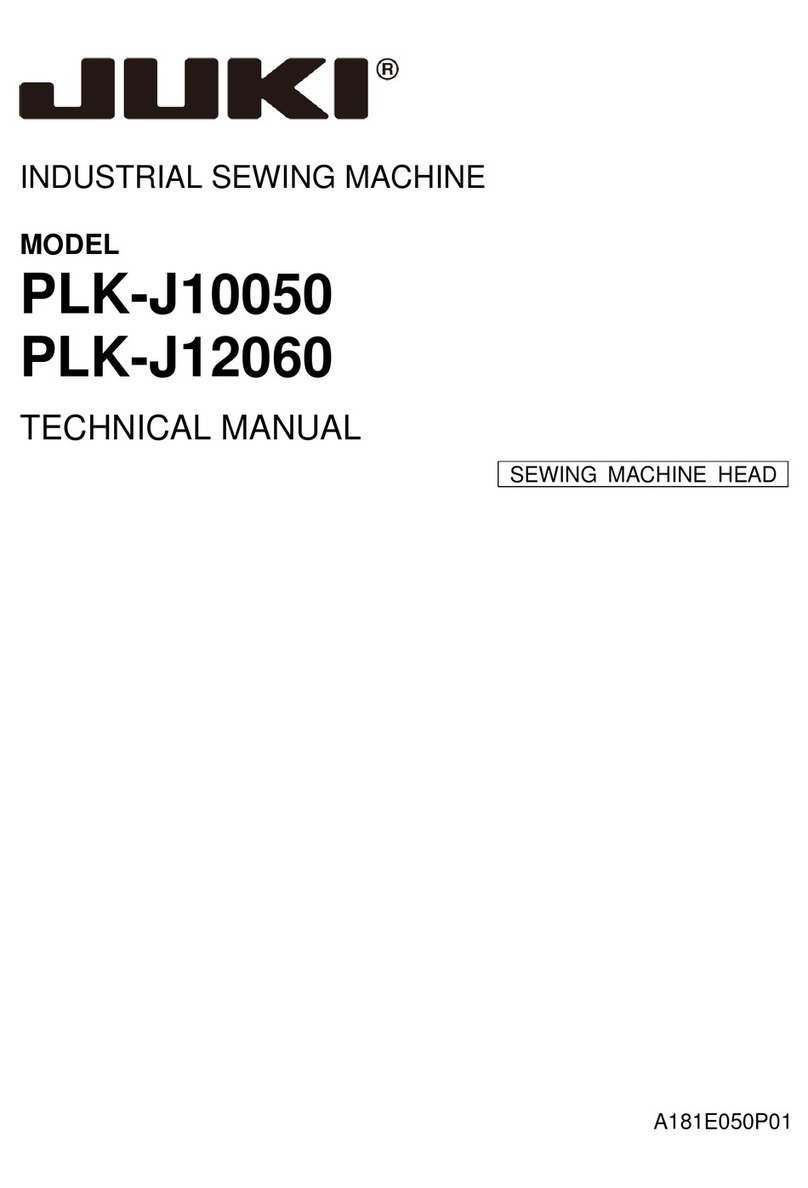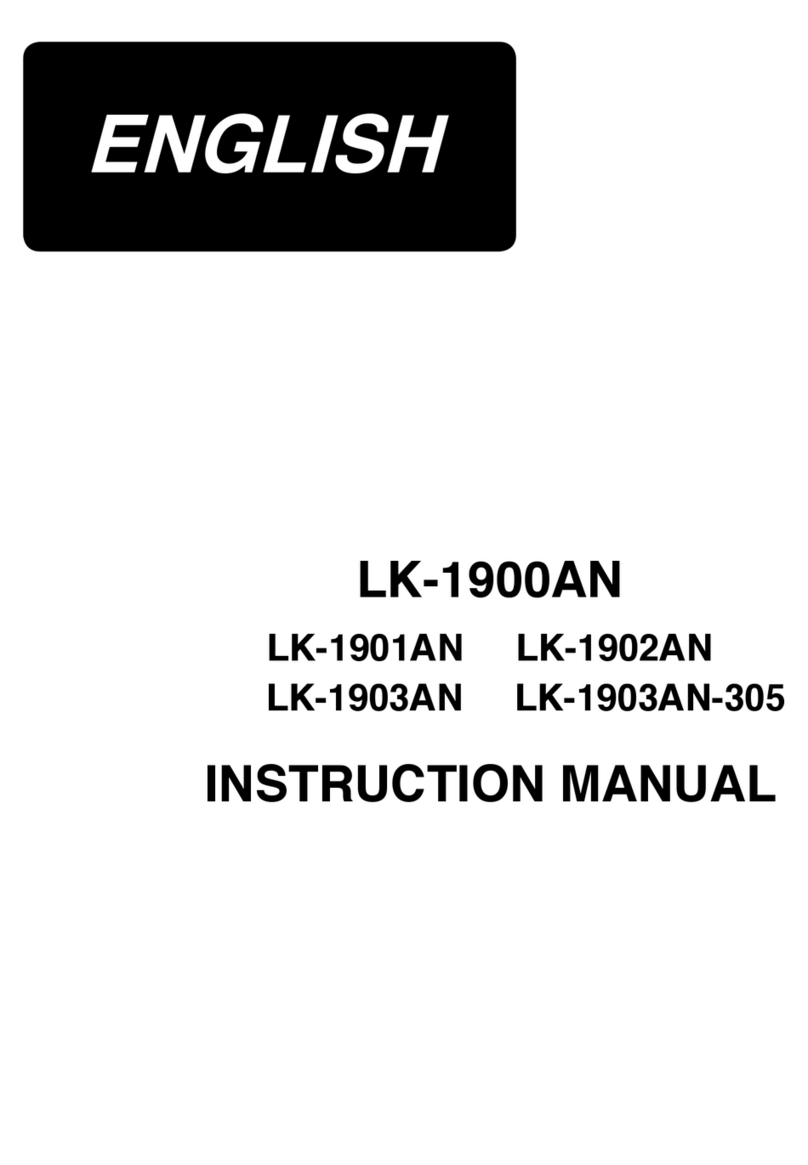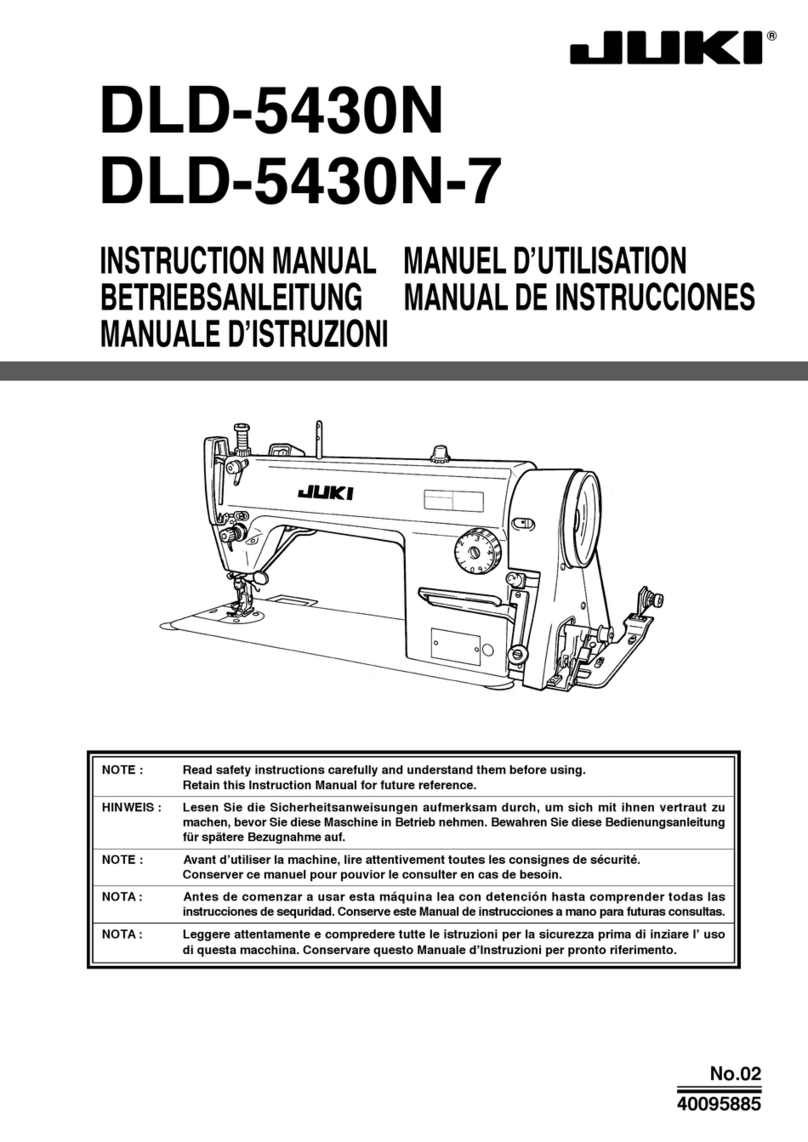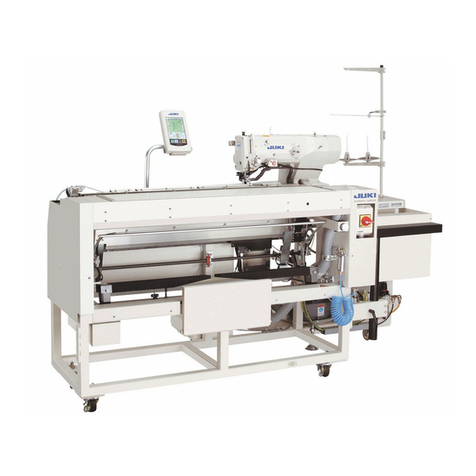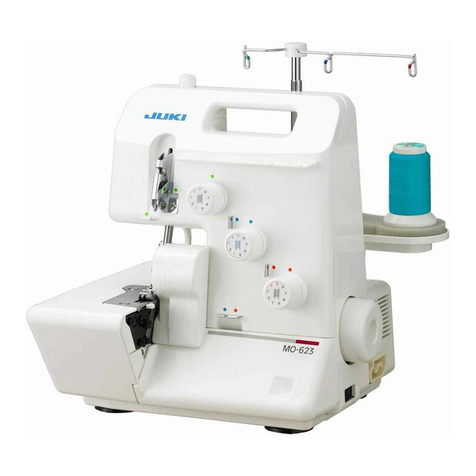
−5−
™For adjusting the timing of the travel of the yoke slide, align
the engraved marks of the loop positioning finger cam and
the triangle loop positioning finger cam with the engraved
mark of the cam and looper sleeve after the adjustment of
the looper so that the engraved marks are on a straight line.
Then temporarily tighten the screws.
1) Adjust the crosswise travel timing of the yoke slide in the
rotational direction of the triangle loop positioning finger cam.
When the timing is higher than 58 mm (48 mm), adjust the
timing in the rotational direction of the cam, and when it is
lower than 53 mm (43 mm), adjust the timing in the reverse
rotational direction of the cam.
The center of the cam is aligned with the center of the
positioning finger yoke slide in the longitudinal position of
the cam.
2) Adjust the lengthwise travel timing of the yoke slide in the
rotational direction of the loop positioning finger cam.
For the triangle movement of the yoke slide, it is good for
the yoke slide to go back like a slant line. When the yoke
slide goes back like a swollen line, adjust the cam in the
reverse rotational direction, and when it goes back like a
hollow line inside, adjust the cam in the rotational direction.
3) Adjust the longitudinal position of the yoke slide by moving
the loop positioning finger cam in the lengthwise direction.
™If the triangle loop positioning finger
cam begins to travel too late, thread
breakage, thread remaining, baloon
stitch, and insufficient tightness of
stitches will result.
On the contrary, if it begins to move
too early, the needle will come in
contact with the yoke slide.
™If the loop positioning finger cam
begins to go back too early, the
retreat of the yoke slide will become
like a swollen line and the looper
will hook the thread twice.
™On the other hand, if it begins to
retreat too late, its retreat will
become like a hollow line and the
needle will come in contact with the
yoke slide.
™If the longitudinal position of the
yoke slide is improper, the looper
will hook the thread twice or the
needle will come in contact with the
yoke slide.
Adjustment Procedures Results of Improper Adjustment
Yoke slide retreats like
a swollen line.
Yoke slide retreats like
a hollow line.
Loop positioning
finger cam
Looper
Engraved mark
Triangle loop positioning
finger cam Cam and looper sleeve
